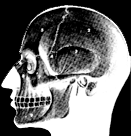Buffon, the Enlightenment sensation
The finest pen of his age, a giant of natural history, geometry and art: Buffon deserves to be restored.This year marked the tercentenary of the birth of two of the greatest naturalists of the eighteenth century – the Swede Carl Linnaeus (1707–78) and the Frenchman Georges-Louis Leclerc, comte de Buffon (1707–88). In April, Linnaeus’s 300th birthday was celebrated in the scientific journals, museums put on special exhibits, newspapers published articles about his influence. But for Buffon’s birthday, in September, there were no candles on the cake. Even in France, not much fuss was made – a conference in Dijon, a few displays at the Muséum national d’Histoire naturelle, a flurry of publishing; and that was it.
Fame is relative – Buffon has a crater on the Moon named after him, Linnaeus does not – but while the name of the Swedish thinker should provoke a glimmer of recognition in most biology students, that of Buffon is more likely to conjure up the athletic Italian goalkeeper than the father of French natural history. This is unfortunate, as Buffon was one of the great figures of biology, and one of the publishing sensations of the Enlightenment. Buffon’s ambition was astonishing: he wanted to summarize all human knowledge about the natural world, under the title L’Histoire naturelle, which began to appear in 1749. Not surprisingly, he did not complete this mammoth exercise – he managed to publish "only" thirty-six volumes in the space of thirty-nine years, limiting his focus to mammals, birds and minerals, while a further eight volumes appeared after his death. Link
posted by johannes,
Friday, March 21, 2008
[The Archives]

.
.
.
.
.
|
.
.
.
|